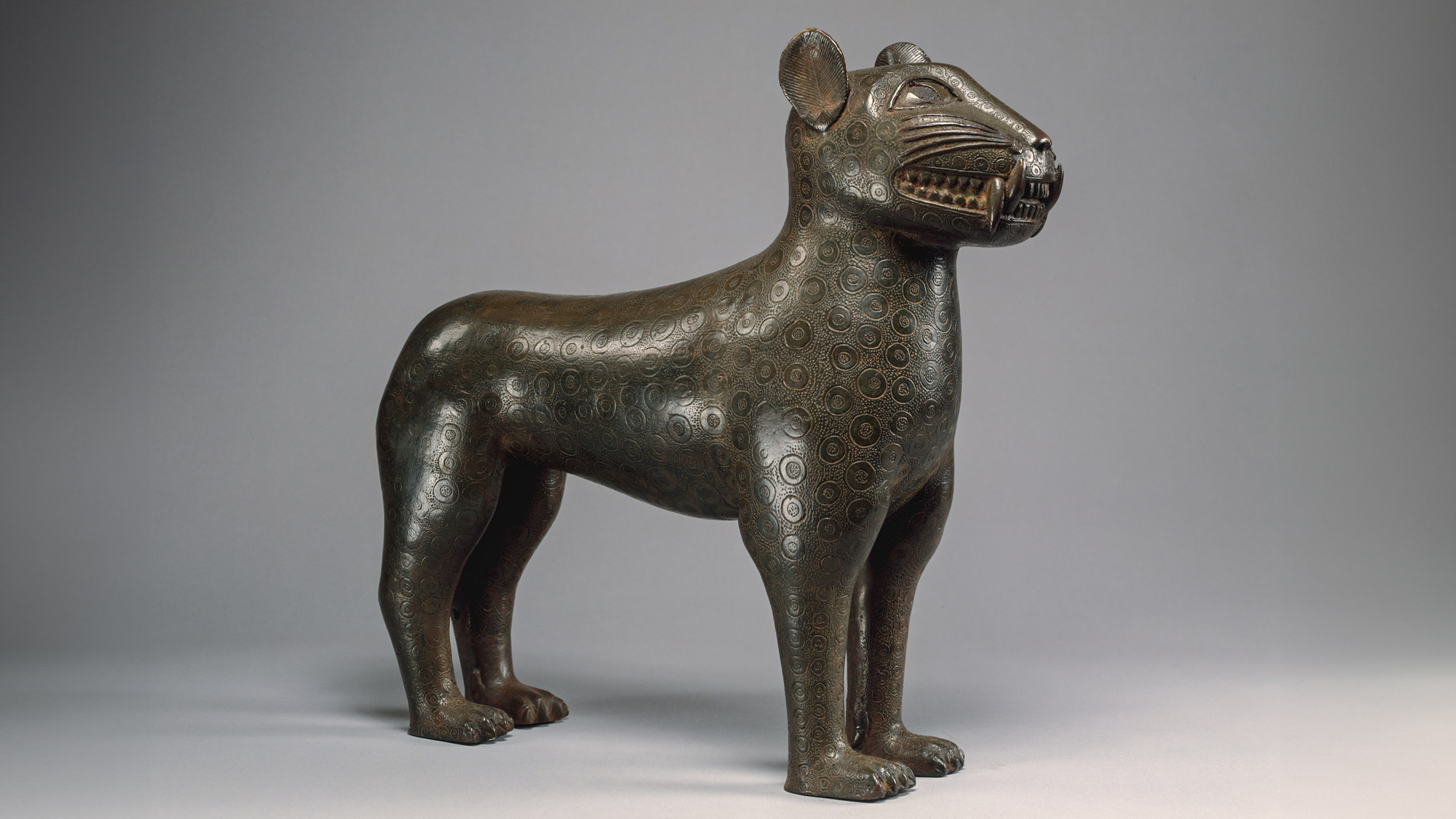The Digital Benin project provides a central place to see artifacts that are now scattered around the Global North. Its organizers hope it will be the first step toward repatriation.

Leopard sculpture from Benin (1550-1680)
Metropolitan Museum of Art
When British forces raided the African kingdom of Benin in the late 19th century, they took with them thousands of sculptures dating back centuries. Sold to private collectors and museums in the Global North, the artifacts, known as the Benin Bronzes, included ceremonial swords, ritualistic statues, and musical instruments that belonged to the Edo people. Their looting had a profound impact on the community, descendants of which live in and around modern-day Benin City in southern Nigeria. It effectively severed the connection between them and their cultural heritage.
Despite longstanding pressure, many institutions, particularly in Germany and the UK, have resisted calls to share information about the Benin Bronzes in their collection. This makes it difficult to determine how many there are outside Nigeria, and where.
But the launch in November 2022 of a pioneering platform called Digital Benin has changed that. Hosted by the Museum am Rothenbaum (MARKK) in Hamburg, Digital Benin is an online catalogue of more than 5,000 Benin Bronzes. Its organizers say it is a form of digital restitution, using technology to reestablish a community’s link to artifacts that were looted from native lands. The catalogue includes, for the first time, Edo-centric knowledge, history, and language, including traditional Edo names for the objects and the locations where they originated. The platform was built by a team based in the US, Europe, and Nigeria with an initial €1.2 million from a fine-art foundation in Berlin called Ernst von Siemens Kunststiftung. It has been designed specifically to ensure accessibility for people who use the internet predominantly via mobile, as most Nigerians do.
Don’t settle for half the story.
Get paywall-free access to technology news for the here and now.
Subscribe now
Already a subscriber?
Sign in
MIT Technology Review provides an
intelligent and independent filter for the
flood of information about technology.
Subscribe now
Already a subscriber?
Sign in
Anne Luther, a digital heritage specialist and one of Digital Benin’s principal investigators, hopes the project will be a model for other communities that want to explore how technology can be used to help them reconnect with and reclaim stolen artifacts. “Before Digital Benin, digital restitution was not a conversation being had by larger institutions,” Luther says.
In building the catalogue, the team received more than 400 data sets from 131 institutions in 20 countries, which they then drew from in order to make the objects accessible, findable, and traceable. Luther says being able to assure institutions that they would be able to retain their rights to and ownership of any data sets they shared meant that more institutions were willing to do so.
But she says the site is just a step on the road to restoring the artifacts to the Edo. Pressure to make such restitution has been growing on a number of governments and institutions, including the British Museum, which has more than 900 objects. And there are signs the pressure is working: Germany, for example, has repatriated 21 Benin Bronzes formerly stored in its institutions.
Eiloghosa Obobaifo, an anthropologist based in Benin City, says the site has been helping locals, including contemporary bronze casters who make sculptures with ancient techniques, reconnect with their history. “Bronze casters have becomevery dependent on the platform and use it to see objects they could re-create,” says Obobaifo, who carried out research for the project. “It has also had an impact on education, with students using the platform for research. It has been encouraging for me to see people appreciate the information we have put out there.”
Luther and her colleagues are developing a new project—contingent on funding—with the Living Arts Foundation in Cambodia to preserve the country’s performing arts traditions. Digital Benin, meanwhile, has expanded to include more than 4,000 archival documents linked to the Benin Bronzes.
But the team hopes the Digital Benin model can grow to a global scale. “The long-term goal is to develop a database that connects all objects in all institutions worldwide,” Luther says. She estimates that it would take $5 million over five years to develop and maintain an expanded prototype system.
Gouri Sharma is a journalist based in Berlin.




